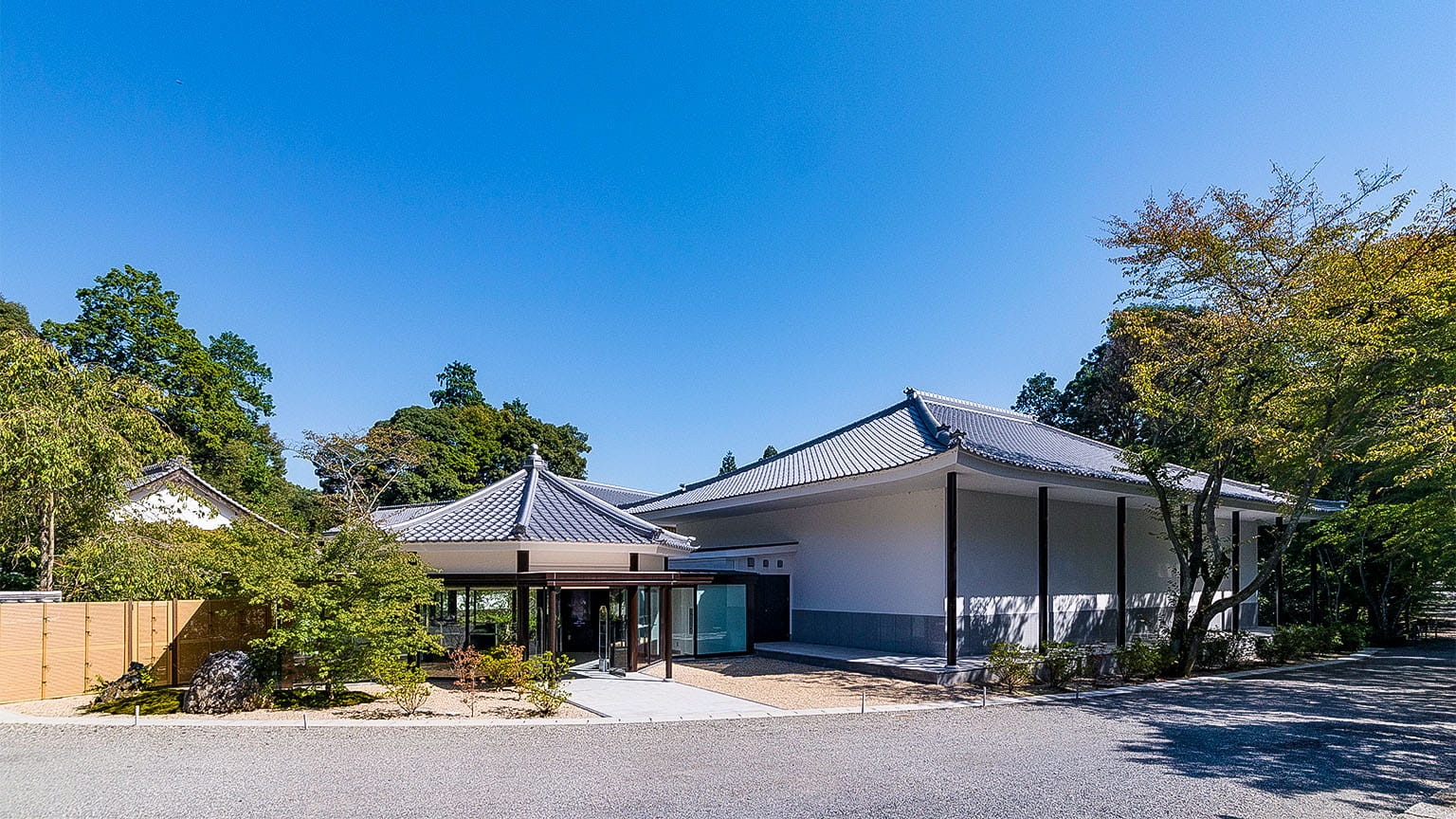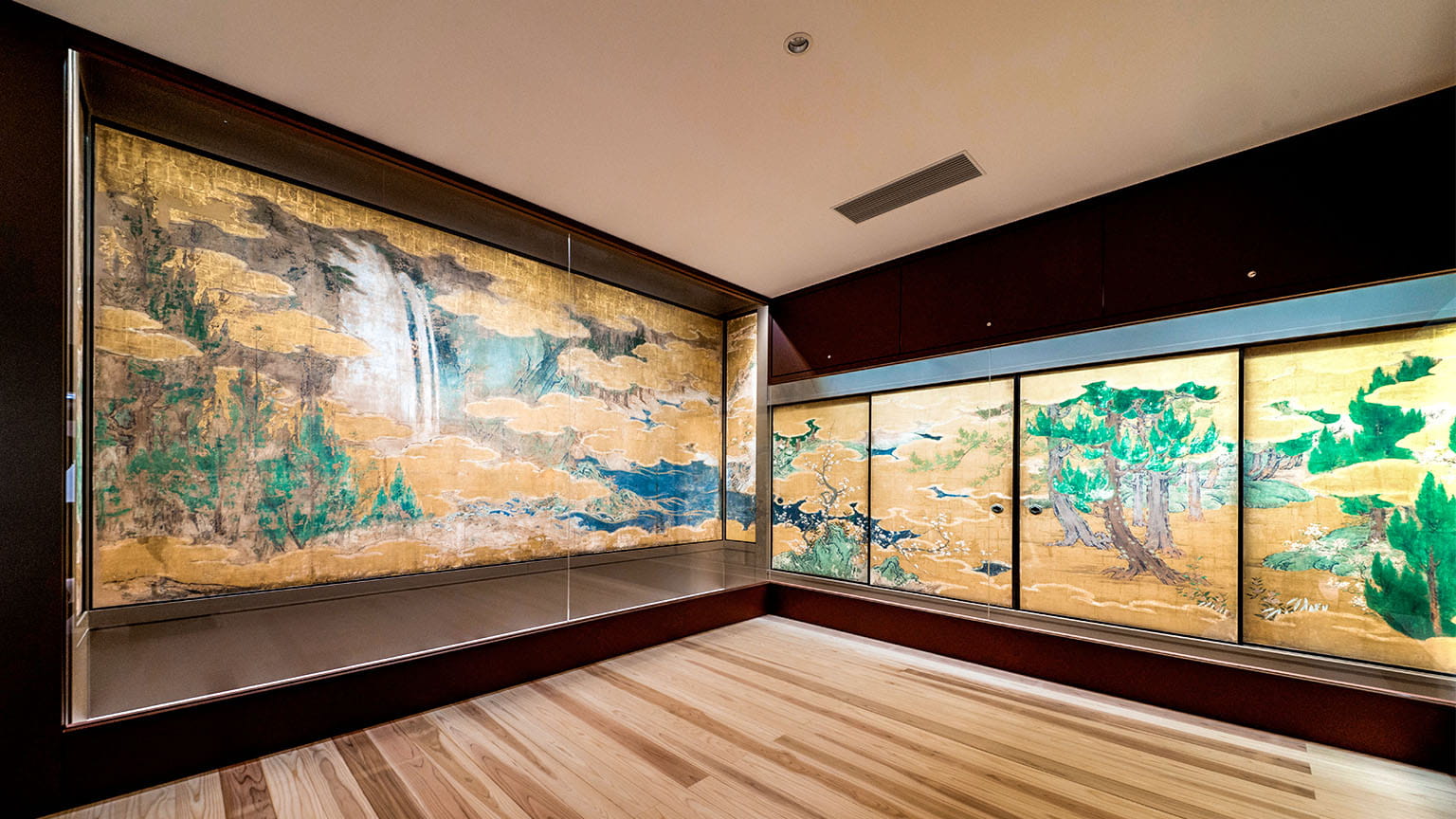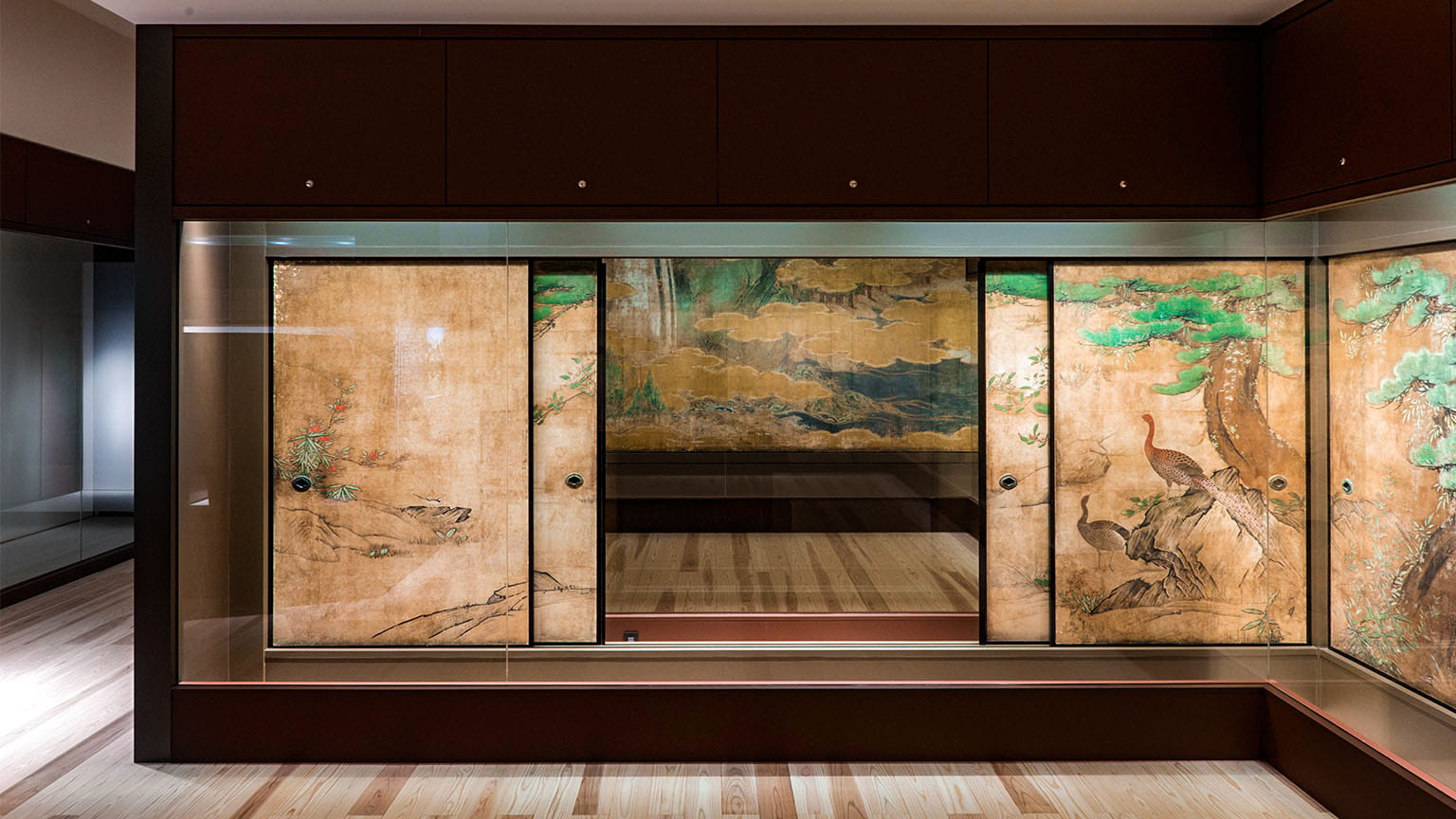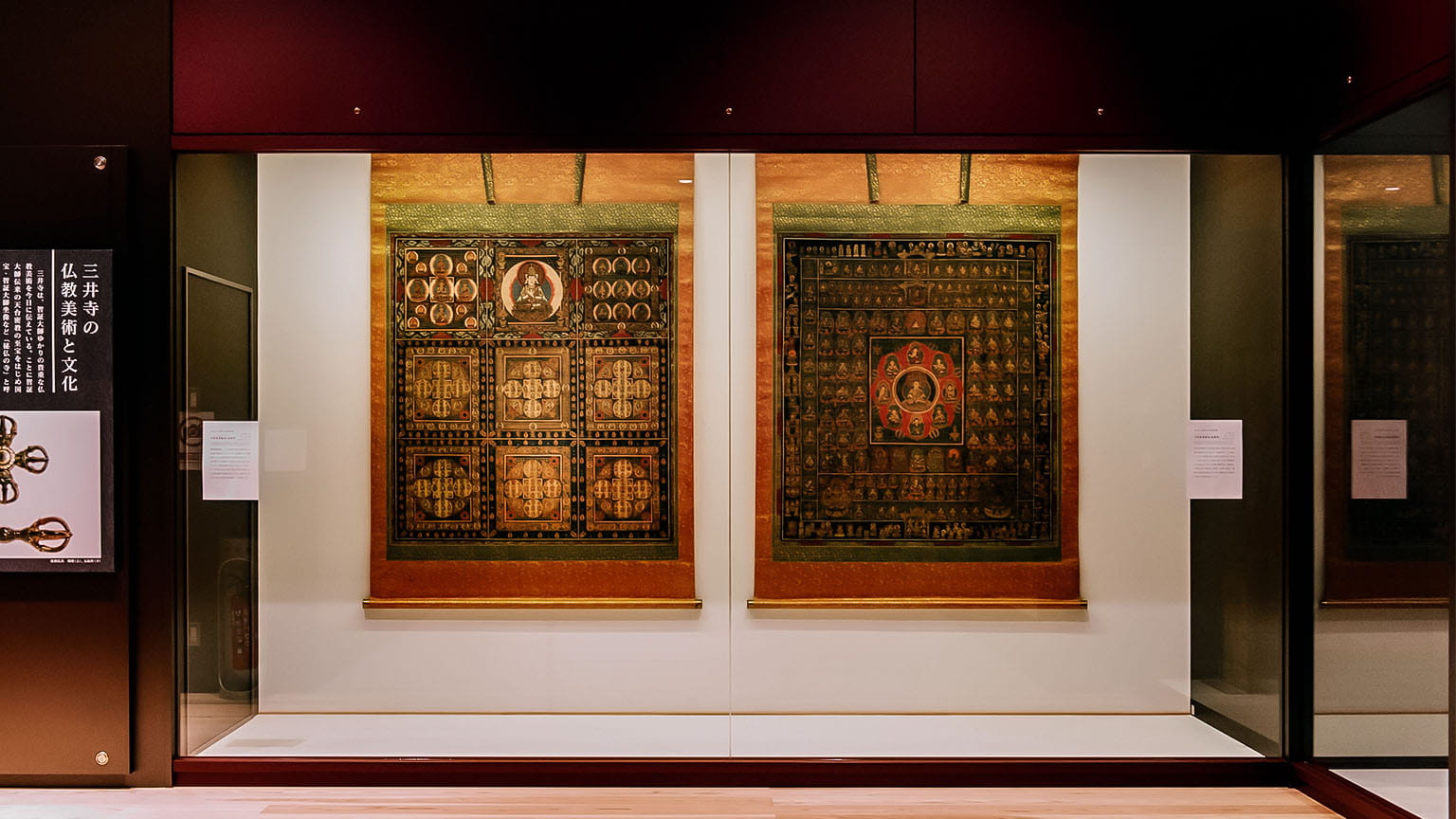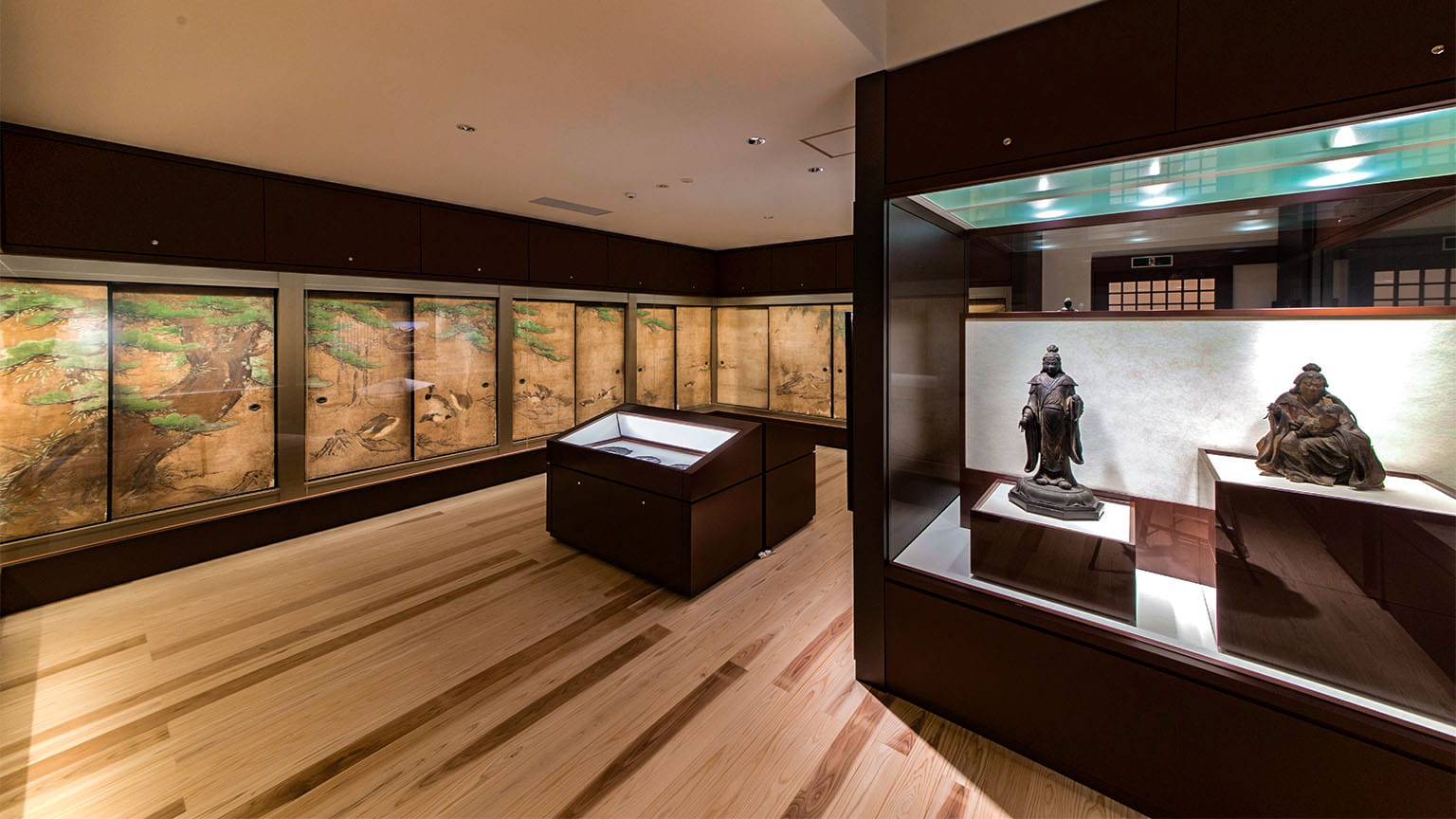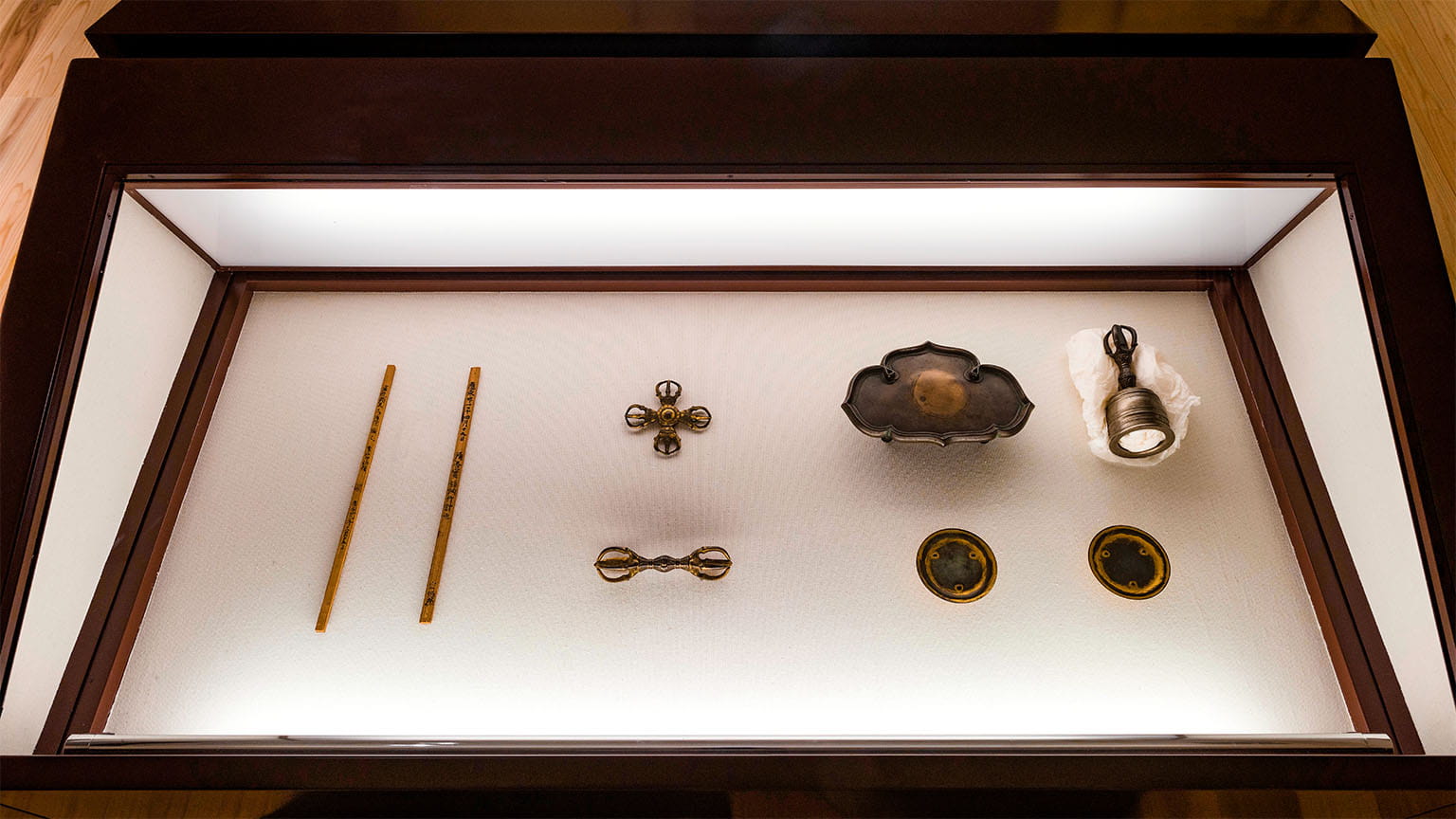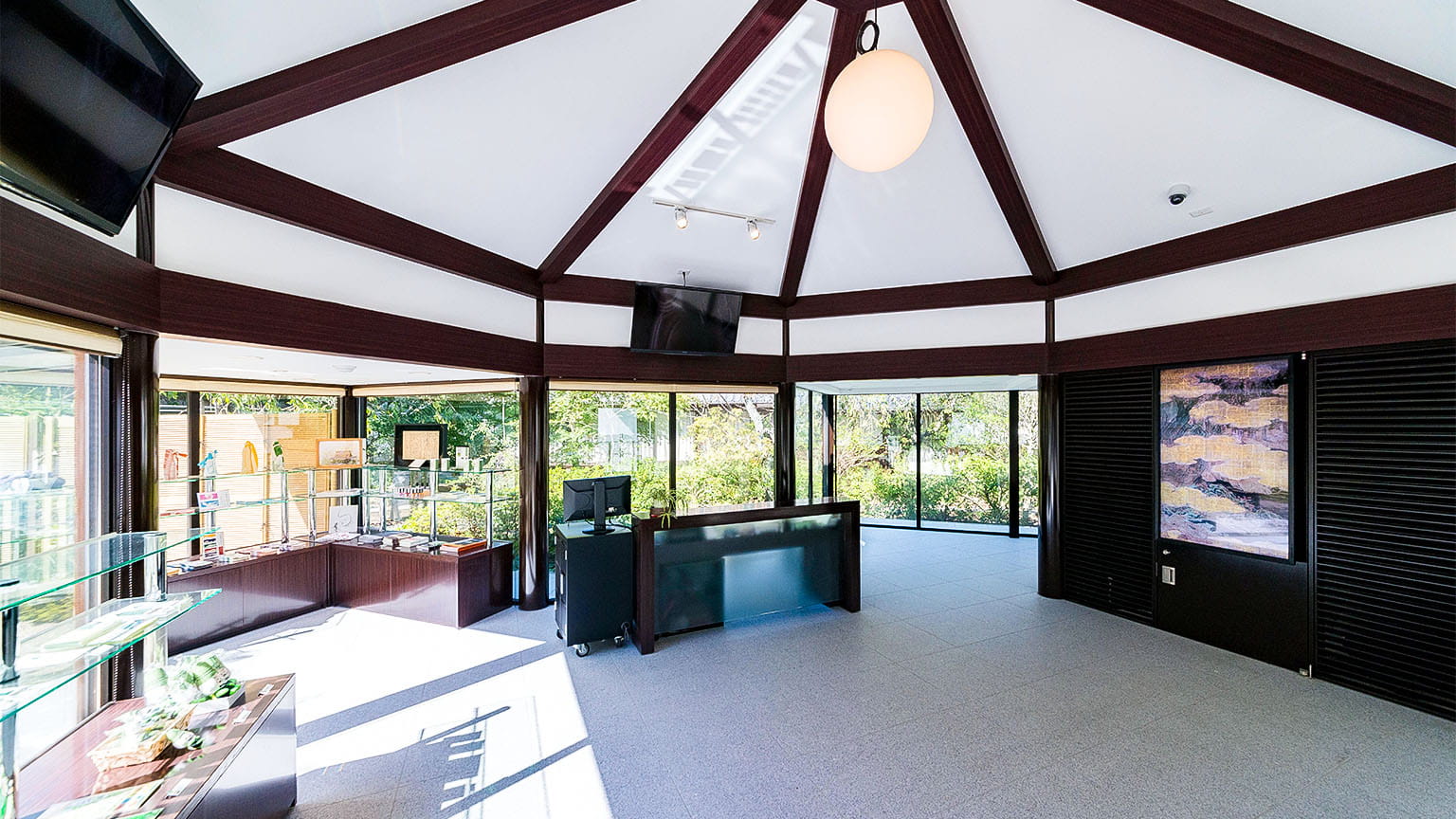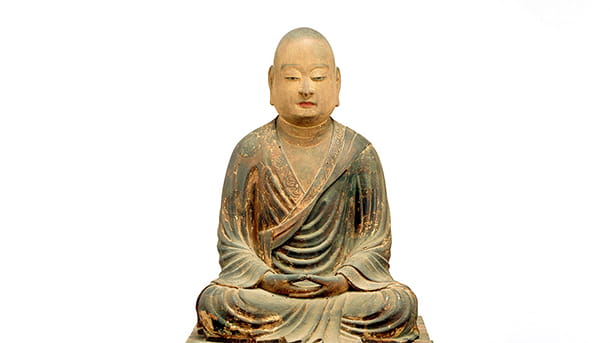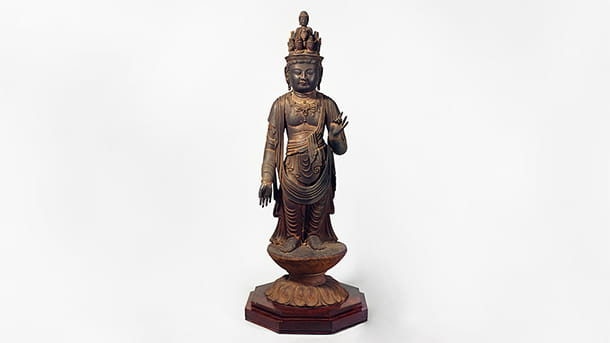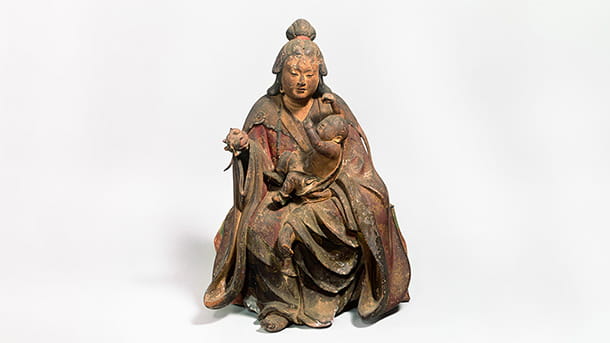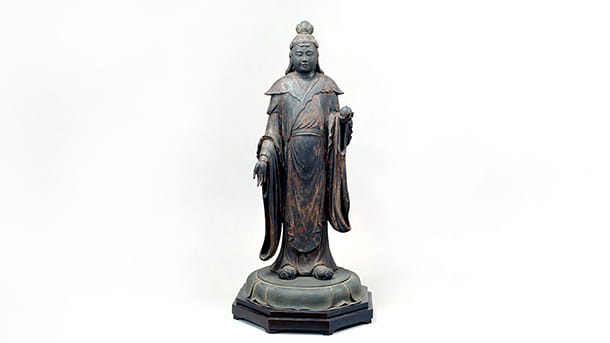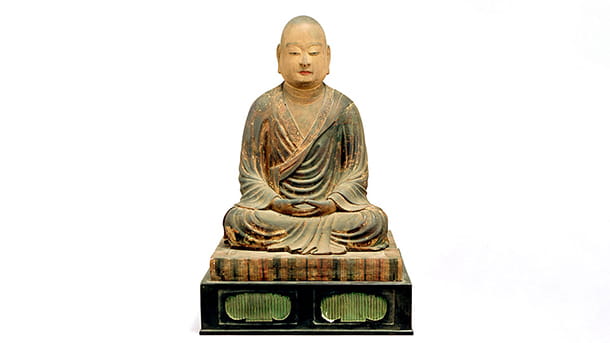“Chisho Daishi”
Born in Zentsuji City, Kagawa Prefecture (present-day) in 814. His father was from the Wake clan, and his mother was a niece of Kukai. At the age of 15, he went to Mt. Hiei and became a disciple of Gishin (778–833). At the age of 40, he went to Tang China in 853, learned Tendai studies and esoteric Buddhism in Mt. Tendai and Chang’an. Later, he disseminated what he had studied after returning to Japan. He stored the scriptures brought back from Tang China in the Toin Hall and took office as the first chief administrator. He then established a foundation to promote Miidera Temple to the Jimon branch main temple later by appointing Miidera Temple as a Tendai sect branch temple. He was appointed as the fifth Tendai head priest in 868 and dedicated himself to the prosperity of Buddhism for an impressive 23 years. He passed away on October 29, 891.
“Momoyama”
One of the classifications of periods. Approximately 20 years of the period while Toyotomi Hideyoshi took power in the late 16th century. For art history, between the Azuchi-Momoyama period and the early Edo period is important as a transition period between medieval Japan and early modern times. In particular, constructions of magnificent castles, palaces, temples, and shrines, as well as decorative paintings on paper sliding doors and screens inside those buildings were developed. Also, the development of genre-paintings that show ordinary life and craft technology such as pottery, lacquer work, dyeing and weaving is remarkable.
“Kano Mitsunobu”
Kano Mitsunobu (1565–1608) was the first son of Kano Eitoku (1543–1590) who led the artists’ world of the Momoyama period. He made a number of works with his father Eitoku while serving Oda Nobunaga and Toyotomi Hideyoshi. However, many of their works were lost. The screen paintings of the Kangakuin Reception Hall in Miidera Temple are one of his greatest works that show his style.
“Kangakuin Reception Hall screen paintings”

In the Ichi-no-ma chamber, flowers and trees throughout the four seasons are depicted on the gold-foil-pressed sliding doors. Japanese plum and cypress are drawn on the four sliding doors in the north. Spear-shaped cedars and cherry trees are continuously drawn between the east corner of the sliding door in the north and those in the east. Rhododendrons behind the rocks on the waterside on the south corner of the two sliding doors in the east, and hydrangeas, irises, cedar woods, and autumn leaves are on the four mairado doors in the south, followed by the painting of the waterfall and snowy mountains in the large alcove in the west. Each of them has a different style of that of Kano Eitoku, the father of the painter Kano Mitsunobu; his works create a serene and elegant atmosphere, displaying his unique characteristics.
In the Ni-no-ma chamber, flowers and birds are drawn on 24 unprimed-paper sliding doors. With two pine trees on the right and left in the northwest corner as the center, pine trees with wisterias, copper pheasants, ducks and mandarin ducks are depicted. Moreover, there are bamboo trees with sparrows and rocks with wagtails on the east side, and reeds in the waterside with birds including herons on the south side. These express nature in fields and mountains with a gradual transition of the seasons with freshness.
“eleven-faced Kannon standing statue”
The former principal image of Bizoji Temple, one of the branches of Miidera Temple. From the head of the Kannon to the bottom of the lotus pedestal of the statue is made of a single piece of cypress. It is a type of sculpture made of fragrant wood. The statue features its unique appearance with a face with plump cheeks and rounded body. It also has other characteristics such as the pectoral decoration with an elegant openwork and a robe with exquisite carvings. It is highly valued as a rare Tendai Esoteric Buddhist carving of the early Heian period due to the above mentioned characteristics.
“seated statue of Kariteimo”
The statue is made with a technique, yosegi-zukuri (assembled with pieces of wood), with cypress, holding a pomegranate in her right hand an infant in her left arm with a loving look on her face. Wearing a vivid colored Song-style (Chinese) robe with kirikane decoration (using thin foils of gold), she sits on a round pedestal with one foot placed on the opposite thigh. Her loving expression and the precise shape of drapes demonstrate the characteristics of the realistic expression used for the carvings in the early Kamakura period (1185–1333).
“standing statue of Kisshoten”
She has been worshipped as a goddess of happiness, beauty, and wealth in Japan since the Nara period (710–794). It was made with the technique, yosegi-zukuri (assembled with pieces of wood), with cypress. Her appearance befits the image of the goddess who rules fortune: standing gracefully, holding a gem in her left hand and wearing a Song-style (Chinese) robe with her tied hair covered with a cloth. It is the statue of a graceful goddess that demonstrates clearly the realistic expression in the early Kamakura period (1185–1333).
“seated statue of Chisho Daishi”
The seated statue of the restorer of Miidera Temple, Chisho Daishi (814–891), was made by referring to the seated image of Chuson Daishi, a National Treasure, which is placed in the Toin Hall. From the head to knees and the edge of the statue’s costume was made with a piece of cypress. The whole statue is beautifully colored, and his calm and gentle expression remind us of people’s profound reverence toward him.


